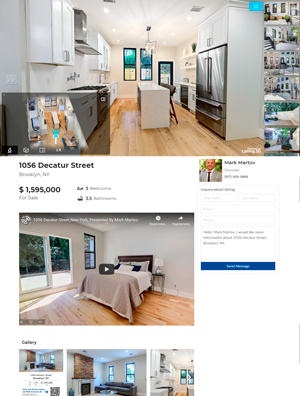Beyond the Data: Unraveling the Future Path of the U.S. Housing Market

Introduction:
The housing market remains resilient despite economic headwinds like high mortgage rates and inflation. This analysis provides an overview of key real estate market indicators to assess the current state of the market and implications for different stakeholders. Utilizing data from sources like Zillow, we will examine metrics including home prices, listings, sales activity, and seller behavior to develop a holistic perspective. Though the market faces challenges, opportunities exist for recovery and stability if approached strategically. A nuanced regional and macroeconomic analysis would further enrich insights, but this snapshot offers valuable signals regarding market direction.
Summary:
Data suggests the housing market retains underlying strength though showing signs of deceleration. Home values continue appreciating positively, evidencing high demand against limited inventory. Rapid sales activity indicates advantage tilting toward sellers, though cooling trends in bidding wars and prices may provide some relief for buyers. While high mortgage rates have reduced competition, well-priced, desirable listings still sell quickly. Homeowner hesitation in selling further constrains supply dynamics. Overall, real estate professionals and clients must monitor data closely, set realistic expectations, and remain nimble to capitalize on opportunities. Though mortgage rates have tempered growth, the housing market remains competitive for discerning buyers and properly positioned sellers. Granular analysis of regional differences and macroeconomic factors can augment these national observations.
Data source: Monthly Snapshot by Zillow Research
Overall Market Analysis
The snapshot from Zillow indicates that the housing market has shown resilience and adaptability. Despite high mortgage rates, national home value appreciation has steadied, which is a positive sign for potential recovery. Furthermore, there’s a strong signal from the market that opportunities for recovery are being realized, even with the challenges posed by limited listings and increased competition.
Key Observations:
- National Home Value Appreciation and Market Dynamics:
- The overall national home value appreciation has slowed but is still in a positive territory, indicating a strong housing market.
- Despite high mortgage rates, the housing market hasn’t cooled off too much. This could be because of continued demand and low inventory.
- Zillow Home Value Index (ZHVI):
- The ZHVI for August is $351K, up 0.23% from the previous month and 1.33% year-over-year. This signifies steady growth in house prices over a year.
- Median List Price vs. Sale Price:
- The median list price in August was $395K, showing a 1.00% drop from the previous month but a rise of 1.31% year-over-year.
- In contrast, the median sale price in July was $365K, which is a decline of 0.82% from the previous month and a significant drop of 7.9% year-over-year.
- This disparity might suggest that while sellers are listing at higher prices, buyers are managing to negotiate and purchase homes at prices below the list price.
- Percentage of Homes Sold Above List Price:
- In July, 40.4% of homes were sold above the list price, a decrease of 1.2 percentage points from the previous month. This might indicate a slight cooling in bidding wars or over-enthusiastic purchasing.
- Housing Price Trends:
- The graph displays a clear upward trajectory in housing prices over the years.
- There’s a noticeable increase in the rate of price appreciation around 2020, which could be attributed to the pandemic’s influence. This is possibly due to low-interest rates, increased demand for home spaces due to remote work, or limited supply because of paused constructions.
- July Home Sales:
- 267,000 homes were sold in July, which is 22.96% less than the pre-pandemic level. This reduction could be due to decreased inventory or cautious buyer sentiment during uncertain times.
- August New Listings:
- There were 349,327 new listings in August, marking a 3.98% increase from the previous month but a significant 12.71% decrease year-over-year. This suggests that while more homes are coming onto the market compared to the previous month, the overall number is still down compared to the previous year.
- Days to Pending:
- Homes in August took an average of 13 days to go from listing to pending, which is much faster than the 26 days in the pre-pandemic period. This shows that the market remains competitive, with homes being snapped up quickly.
- Ever-active Inventory:
- The ever-active inventory in August stood at 964,605, a decrease of 2.22% from the previous month and 13.94% year-over-year. This reduction in available houses further emphasizes the point about a competitive market with high demand and limited supply.
Finding and winning the one
- The statement “Higher mortgage rates mean much less competition” suggests that increasing mortgage rates have reduced the pool of potential buyers, leading to less competitive bids for properties.
- However, despite fewer new listings than normal, popular, well-priced properties are still selling rapidly. This underscores the importance of pricing a property correctly.
Median Days to Pending:
- From 2018 to the start of the pandemic, we see fluctuations in the median days to pending, peaking around 40 days. Post-pandemic, there’s a sharp drop to around 15 days in 2022 and further down to 13 days in 2023.
- The reduced time suggests that while there’s less competition due to higher mortgage rates, the homes that are being listed are moving to pending status much faster than before. It’s a clear sign of a seller’s market where demand outstrips supply.
New Listings Comparison:
- The chart provides a month-by-month comparison of new listings in 2022 and 2023 against the 2018-2019 average.
- While early 2022 almost mirrors the pre-pandemic average, a surge appears in March which continues till July. From August, there’s a decline, significantly dropping by December.
- The data for 2023 suggests fewer listings than the previous year and much fewer than the pre-pandemic average. This might be due to homeowners hesitating to sell, as inferred from the last section of the chart.
Top Reasons for Homeowner Hesitation:
- 26% of homeowners are concerned about finding or affording a new home. This could be due to the current market dynamics of rapid sales and potentially higher prices, making it challenging for sellers to find replacement homes after selling.
- 24% cite “Current life uncertainty” as a reason for hesitation. This could be influenced by various factors, including economic uncertainties, job security, or broader societal changes.
Multiple Perspectives:
- Seller’s Perspective: It remains a favorable market for sellers with properties often selling close to or above the listing price. However, the percentage of homes sold above the list price is showing a decreasing trend.
- Sellers: It’s crucial to price homes correctly. Well-priced homes are still going quickly, so understanding the market value is paramount.
- Buyer’s Perspective: Buyers might face competition, evidenced by the quick transition from listing to pending. The decreasing year-over-year median sale price could provide some relief, but the overall trend remains upward.
- Buyers: Must act quickly when they find a desirable property, given the rapid transition to pending status. They should also be financially prepared, given the higher mortgage rates and potential competition for well-priced homes.
- Economist’s Perspective: The data signifies a robust housing market with strong demand. Factors such as high mortgage rates haven’t deterred the market’s growth. However, the reduced number of home sales and new listings year-over-year might suggest supply-side constraints.
- Real Estate Professionals: Need to focus on educating clients about the current market dynamics. For sellers, guidance on realistic pricing will be crucial. For buyers, helping them navigate mortgage options and acting swiftly on desirable properties will be beneficial.
Concluding Thoughts:
The U.S. housing market remains strong with signs of cooling but is still skewed in favor of sellers due to high demand and limited inventory. Key indicators such as the ZHVI and median sale price continue to rise, though at a slower rate. For a more comprehensive understanding, it would be helpful to analyze regional data, factor in interest rates, and consider broader economic conditions.
Additional Services
Take Your Marketing Even Further






Additional Features at no cost
Part of any package












